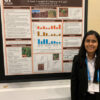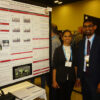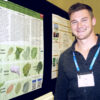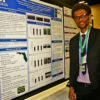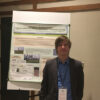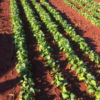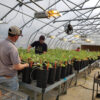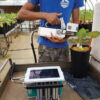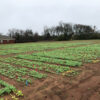
Message from the Executive Committee
SPARC is happy to have a new partner in Nuseed Limited. Nuseed, a wholly owned subsidiary of Nufarm Limited announced last November that it is expanding its global portfolio to include carinata. According to a statement issued by Nuseed, Carinata will be added to Nuseed’s global canola, sorghum and sunflower development and commercial sales programs. The expansion of Nuseed’s portfolio was achieved through acquiring specific carinata technology, IPR and key expertise from Agrisoma Biosciences Inc.
As Nuseed plans to “ramp up oil production to 200,000 metric tonnes over the next few years beginning in South America”, we at SPARC continue to prepare ground for a successful relaunch of carinata in North America with specific focus in the Southeast. We have identified the barriers and are quickly learning what works and what does not. Our job is to continuously add value to the carinata enterprise in the context of our performance area. That comes through exploring and testing ideas and concepts that make our processes efficient, be it crop production in the field, or logistics, fuel production, or meal utilization. Our mission has not changed and that is to commercialize carinata in the Southeast US. SPARC’s resident expertise taking a trans-disciplinary approach and our industry partner’s commitment to the region are key to realizing this mission.
SPARC Stories
Partnerships required to accelerate feedstock commercialization
The Southeast Partnership for Advanced Renewables from Carinata (SPARC) and Integrated Pennycress Research Enabling Farm and Energy Resilience (IPREFER) are the two current Coordinated Agriculture Projects funded under USDA’s National Institute of Food and Agriculture. They are focused on two brassica oilseeds for biofuels. The primary goal of both projects is to remove the technological, economic and social barriers to successful commercial development of carinata and pennycress for fuel, feed and chemicals.
Academia-industry-stakeholder partnerships are the heart of carinata and pennycress commercialization in the US Southeast and Midwest respectively. Recognizing that industry and academia synergies are key to improvement, adoption, and commercialization of emerging biofuel feedstock, the Bioenergy Systems Community of the American Society of Agronomy hosted a symposium entitled “Opportunities through Industry-Academia Partnerships for Emerging Biofuel Feedstock Commercialization” during the ASA-CSSA-SSSA 2019 Meeting in San Antonio, Texas (November, 2019).
Commercial Aviation Alternative Fuels Initiative (CAAFI) Executive Director, Steve Csonka discussed the “aviation industry’s interest in emerging oilseed feedstock for the production of sustainable aviation fuel and multiple high value co-products” as well as progress made towards commercialization of Sustainable Aviation Fuels (SAF). Csonka serves as the chair of SPARC’s advisory board and serves as an advisory board Member for IPREFER. He shared that the aviation industry is committed to improving annual fuel efficiency by 1.5% per year, stabilizing CO2 emissions for international flights from 2020 onwards and targeting 50% reduction of net greenhouse gas emissions by 2050 relative to 2005 levels. Sustainable Aviation Fuels derived from sustainable lipids, sugars, and lignocellulose feedstock are central to achieving these goals. Although there is significant knowledge and infrastructure around production and handling of oilseeds, reduced farmer fear with respect to annuals versus perennial lignocellulosics, vendors capable of supplying equipment that can handle, store, process, and transport, established conversion processes with rapid energy densification upon crushing of seeds, ease of handling fluid feedstock, valuable co-products, demonstrated use of fuel within the aviation industry, he maintains an optimistic but pragmatic view citing challenges related to scaling up to meet SAF demands and achieving a cost parity with fossil jet fuels. He surmised that addressing these challenges will require continued public-private partnerships to accelerate the commercialization of these feedstock.
Rick Bennet, carinata breeding lead with Nuseed and SPARC’s Feedstock Development team member discussed how public-private partnerships helped advance carinata as a next generation low carbon biofuel feedstock. Academia has provided a network of localized interdisciplinary expertise with capability to rapidly address numerous research questions including the generation of data to support regulatory approvals that drive value in the supply chain. Some of the successes of this partnership include the identification of early maturity varieties, increased frost tolerant varieties with improved yield potential and good seed quality and scientific data to support regulatory approval and enhance value opportunities of co-products. Bennett shared some challenges that later blossomed into opportunities specific to his company’s partnership with SPARC including 1. the “hand-off” between research and development and commercial program; 2. the prioritization of research projects and aligning research to support the needs of industry; and 3. establishing rules of engagement and standard operating procedures that streamline communications and sharing of information. Bennet opined that ongoing open communication is key to successful public-private partnerships in the biofuel space. In addition, a well-defined plan and division of responsibilities from the inception is necessary along with continuous evaluation of evolving needs and priorities are critical to the establishment of a new biofuel/bioproduct platform.
Like carinata, domesticated pennycress or CoverCress is a brassica oilseed but it’s more adaptable to the midwestern corn-soybean rotation with potential production on 35 million acres of winter-fallowed lands. John Sedbrook from Illinois State University and IPREFER declared that “At a yield of 1,500 lbs seed per acre ($50-70 profit), pennycress can produce over 60 gallons/acre oil for biofuels, industrial, and food uses along with nearly 1,000 pounds/acre press-cake for animal feed and industrial uses”. Crop improvement successes include “using CRISPR gene editing and EMS mutagenesis to rapidly domesticate pennycress as an oilseed-producing cash cover crop, employing knowledge gained from decades of research on Arabidopsis”. Sedbrook highlighted reductions in seed coat fiber and seed glucosinolate contents as well as increased protein and oil contents. Tim Ulmasov from CoverCress, Inc. IPREFER’s industry partner declared that “by growing pennycress in the off-season between corn and soybean crops, farmers will receive significant positive net return in addition to the value from increased primary crop yield.” CoverCress is targeting first commercial planting in the midwestern Corn Belt in 2021-2022 growing season.
Producing carinata and pennycress as purposely grown cover crop systems on otherwise underutilized winter fallowed lands provide similar agronomic, economic and environmental benefits whether in the Southeast or Midwest including no indirect land use change, increased cash flow and system profitability and provide ecosystem services (improve soil quality, reduce soil erosion, increase nutrient cycling, etc.). The success of these enterprises will depend on the vitality of the partnerships created, fostered and perfected among academia, industry and stakeholder partners.
Ramdeo is the SPARC Feedstock Development team lead. He served as the 2019 Leader of the Bioenergy Systems Community of American Society of Agronomy and co-organized the “Opportunities through Industry-Academia Partnerships for Emerging Biofuel Feedstock Commercialization” symposium along with the community’s 2020 Leader Ratan Chopra. The Bioenergy Systems Community has 520 members that include students, academic and industry professionals across a wide range of disciplines related to feedstock development, production, and conversion and serves as a focal point for people with an interest in sustainable bioenergy feedstock systems to meet, organize, communicate, and collaborate on a wide range of research activities.
Extreme weather events during carinata growing season as affected by sowing date
Historically, extreme weather events such as drought, heavy rainfall and extreme low and high temperatures are important limitations in the process of expanding a crop to new areas. A key issue, therefore, is to understand the spatio-temporal distribution of these events and to determine potential crop management adaptations that could minimize the risk of crop failure in new areas. The simulation of the crop cycle at different sowing dates by using crop simulation models provides a robust quantitative framework to answer this question. The objectives of this study were: (i) to calibrate and validate the CROPGRO phenology component available in the software Decision Support System for Agrotechnology Transfer – DSSAT platform to simulate carinata cycle duration in the Southeastern USA; (ii) to determine the occurrence of dry spells, heavy rainfall and extreme temperatures events during the simulated seasons. Based on this information, the most favorable carinata sowing windows for minimizing potential negative effects of extreme weather events on yield will be determined and discussed.
Carinata crop cycles for 21 different sowing dates (from September to March) were simulated using a well-calibrated crop development model (CROPGRO-Canola adapted to Carinata) for four locations across Florida, USA based on a historical weather data series of 38 years (1981-2018). Simulated carinata cycle duration ranged from 130 to 155 days in Citra, FL and from 130 to 170 days in Jay, FL (Figure 1). The longest cycle duration was obtained when Carinata sowing occurred from the end of October to middle of November.
Figure 1. Carinata cycle length (days) for different sowing dates and locations in Florida, USA. Cycle lengths were simulated with CROPGRO-DSSAT crop simulation model.
Based on the simulated cycle durations for different sowing dates we were able to determine the number of extreme weather events that occurred during the season for each sowing date, including low (< 0ºC), high temperatures (> 32º C), heavy rainfall (> 25 mm/day) and dry spell (7 consecutive days with no rainfall). In the case of Jay, FL, low temperature events were the most frequent event when carinata sowing occurred between September and December but did not occur when sowing took place from February to March. However, when sowing occurred in these months (February and March), the frequency of high temperature events increased. In the case of March sowing, high temperature events exceeded, on average, 16 per cycle. The number of heavy rainfall events was also higher when sowing occurs between late September and November. Our results also showed that 7-day dry spells hardly occur in the region during the simulated carinata cycles. Results of the study for all ten locations will soon been submitted for publication and shared with project members.
Figure 2. Temporal variation of the number of days with high (temperature above 32ºC) and low temperature (below 0ºC), heavy rainfall (rainfall above 25mm) and dry period (7 days consecutive with no rainfall) events during carinata cycle for different sowing dates, in Jay, Florida.
The results of this study quantified the extreme weather events during carinata cycle Jay-FL, as a function of different sowing dates. The next steps of this study are: (i) to quantify these events for other locations in Southeastern USA; (ii) to characterize the effects of the El Niño Southern Oscillation phases on these extreme events during the carinata cycle and; (iii) also, by using the CROPGRO-DSSAT we aim to determine the best carinata sowing date that will allow the farmer to obtain high peanut and cotton yields.
For more information about the calibration process, please contact the authors (email: rnoiajunior@ufl.edu and cfraisse@ufl.edu)
Rogério de S. Nóia Júnior has a Bachelor’s degree in Agronomy from the Agricultural Sciences Center of the Federal University of Espírito Santo, Brazil (2017) and a Master’s degree in Agricultural Systems Engineering (Field: Agrometeorology) from ESALQ, University of São Paulo, Brazil. Part of his undergraduate course was held at the University of Milan, Italy, where he followed the course of Agri-environmental Sciences for a period of 1 year (2013-2014). Currently, He is a research scholar at the AgroClimate group at the Institute of Food and Agricultural Sciences, University of Florida. Rogério’s researches are focused in: Use of crop simulation models in agriculture; impacts of extreme climatic events on agricultural and forestry production; agrometeorology and plant diseases; El Niño Southern Oscillation and its impacts on agricultural crops. This work was performed during Rogério’s brief stint with SPARC. We wish him the very best in his future endeavors
SPARC Member Spotlight
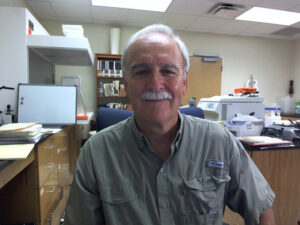 Dr. Dewey Lee is Professor-Emeritus and Extension Agronomist in the Crop and Soil Sciences Department of the University of Georgia. He has a BS and MS from Auburn University in Agricultural Science and Agronomy-Plant Breeding, respectively. He pursued his doctoral studies in Agronomy at the University of Georgia with a focus on crop ecology and physiology. His professional life began with a stint with private industry. He then switched to academia with an extension appointment at the University of Georgia (UGA) and subsequently got into the tenure track at the same institution before retiring as full professor in 2010.
Dr. Dewey Lee is Professor-Emeritus and Extension Agronomist in the Crop and Soil Sciences Department of the University of Georgia. He has a BS and MS from Auburn University in Agricultural Science and Agronomy-Plant Breeding, respectively. He pursued his doctoral studies in Agronomy at the University of Georgia with a focus on crop ecology and physiology. His professional life began with a stint with private industry. He then switched to academia with an extension appointment at the University of Georgia (UGA) and subsequently got into the tenure track at the same institution before retiring as full professor in 2010.
Dewey’s main expertise lies in developing and extending research based technical information on grain crops such as wheat, rye, oats, grain sorghum, sweet sorghum, various cover crops and biofuel crops to extension agents, producers, agricultural consultants and agri-businessmen. He has worked on several biofuel feedstock crops such as miscanthus, energy cane, napiergrass, camelina and others. He brings with him decades of experience of developing and supporting novel crops through research and stakeholder engagement. He is a strong advocate of making farming profitable and sustainable for the producer, and his research goals are aligned with that mission alone. He is very focused on understanding new crops and the intricacies of their habit, growth, and development so that he can provide strategies to producers to help them derive the best return on their investment. Dewey’s strong breeding-agronomy research and extension background in grain crops, biofuels crops and establishing new crops in general makes him a very valuable resource to SPARC. He is able to communicate across disciplines, gauge the depth of the entire project and put his own expertise in the context of the larger project, a skill that is rare at best.
He has led the UGA task force on Bioenergy (2006-2010) and conservation tillage (2004-2006). These task forces delivered training to a diverse audience representing industry, state agencies and academia and led to significant recommendations being made in the right direction in the area of conservation tillage and bioenergy promotion in the state of Georgia. He was also instrumental in forming the Aflatoxin Mitigation Center of Excellence that stemmed from his efforts to address the aflatoxin issue in corn.
Dewey’s expertise makes him an obvious choice to serve on several committees and professional fora, some of which include the USDA-ARS Technical Working Committee for Mycotoxin, the A-4 Extension Division of the American Society of Agronomy and others. Some of the awards he received during his career include awards of excellence or distinguished service from the Association of Wheat Growers, National Association of County Agricultural Agents, American Society of Agronomy, USDA and many other institutions. Most recently he was presented with a life-time achievement award from the Georgia Crop Production Alliance.
Dewey’s pursuit of agricultural research and extension was not a coincidence. In fact it started in his early days in Southwest GA where he was born and raised. Growing or rearing peanuts, corn, chicken and hog were part of his daily routine that likely developed his empathy for producers and their challenges. Even though he is “retired” he is actually far from that. Apart from being an active SPARC member, he also owns and manages RDL Ag Services, LLC, a research and technical service business that provides agricultural solutions. Dewey considers his greatest accomplishment to be his beautiful family that consists of his wife of 35 years and his three children and three grandchildren. He and his wife live on a small farm near Athens, Georgia, and remain active in a local nondenominational church.
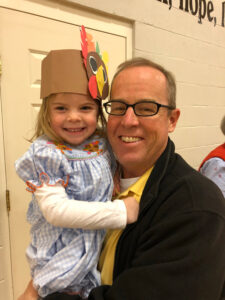
Dr. B. Todd Campbell is a Research Geneticist at the USDA-ARS Coastal Plains Soil, Water, and Plant Research Center located in Florence, South Carolina. His research focuses on the genetic improvement of cotton by developing new genetic resources with high yield potential, enhanced fiber quality, and abiotic stress tolerance. The research emphasizes improving the global competitiveness of cotton by capturing new diversity from wild and exotic sources to expand the genetic base of cotton. Prior to his assignment in Florence, Dr. Campbell was a small grains and premium rice breeder with the California Cooperative Rice Research Foundation. He has a PhD and MS in Agronomy with an emphasis in Plant Breeding and Genetics from the University of Nebraska-Lincoln and a BS in Biochemistry from North Carolina State University.
In addition to his research activities, Todd is very active in the Crop Science Society of America, American Society of Agronomy, National Association of Plant Breeders, and the International Cotton Genome Initiative. He is the former Editor of the Journal of Plant Registrations and the Past President of the National Association of Plant Breeders. Todd is the current overall co-Chair of the International Cotton Genome Initiative. In recognition of his professional accomplishments, he has been recognized as a recipient of USDA-ARS Early Career Scientist and Cotton Genetics Research awards. Todd is a Fellow of the American Society of Agronomy and the Crop Science Society of America.
As part of the SPARC Feedstock Development Team, Todd brings his experience in plant breeding and agronomy to identify optimum genotypes and phenotypes for the region in an effort to develop high yield production systems that generate sufficient feedstock supply. Working at the ‘ground floor level’ of bringing a new crop like carinata into the southeastern US cropping system to benefit growers and local economies is especially gratifying to Todd. The experience of working within a large network of science and engineering expertise covering the entire supply chain from field to fuel is also rewarding.
Todd is a native of Raleigh, North Carolina. He and his wife Rebecca have 4 children who often keep them occupied at baseball fields, soccer fields, tennis courts, basketball courts, and dance studios. When not coaching baseball or attending children’s events, Todd enjoys spending time with his family on the coasts of South and North Carolina. He also enjoys all things outside including gardening and fishing
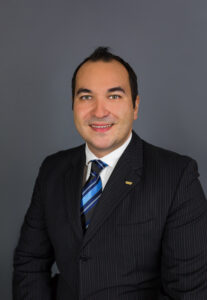 Dr. Seckin Ozkul, P.E. is an operations and supply chain management faculty at the Marketing Department of the Muma College of Business at the University of South Florida (USF). He completed his B.S. in Engineering at Auburn University, AL and worked as a consultant engineer in Tampa, FL for over 3 years. During his tenure as a consultant engineer, Seckin started and completed his Masters in Engineering at the University of South Florida. He then went to University of Florida to pursue his doctorate in Transportation Engineering with emphasis on commercial heavy vehicle operations. He also holds a MS in Marketing with a Supply Chain Management concentration from the University of South Florida. His research experience includes operations management, logistics modeling/optimization, logistics activity center location/site selection criteria development/optimization as well as freight mobility and planning. He also has a proven track record in course material and curriculum development.
Dr. Seckin Ozkul, P.E. is an operations and supply chain management faculty at the Marketing Department of the Muma College of Business at the University of South Florida (USF). He completed his B.S. in Engineering at Auburn University, AL and worked as a consultant engineer in Tampa, FL for over 3 years. During his tenure as a consultant engineer, Seckin started and completed his Masters in Engineering at the University of South Florida. He then went to University of Florida to pursue his doctorate in Transportation Engineering with emphasis on commercial heavy vehicle operations. He also holds a MS in Marketing with a Supply Chain Management concentration from the University of South Florida. His research experience includes operations management, logistics modeling/optimization, logistics activity center location/site selection criteria development/optimization as well as freight mobility and planning. He also has a proven track record in course material and curriculum development.
Seckin has worked on several national, state and local research projects as principal investigator and co-principal investigator. He is the Committee Secretary of TRB’s Freight Transportation Economics and Regulation (AT010) Committee and a member of TRB’s Urban Freight Transportation (AT025) committee. He is a fellow of the International Road Federation (IRF). Seckin is a registered professional engineer (P.E.) in the state of Florida and is affiliated with USF’s Monica Wooden Center for Supply Chain Development and Sustainability, which tackles innovative ideas in the supply chain management arena, such as the usage of blockchain for higher security and traceability by all members of the supply chain team. He is also an affiliated faculty with the Center for Urban Transportation Research (CUTR) at USF.
Seckin’s combined expertise in logistics and supply chain management made him the perfect choice to be on the SPARC supply chain team. He brings in unique perspectives in transportation management to SPARC and given his track record, is well tuned to the diverse pace and demands of industry, governmental agencies and academia. Soon after coming on board he quickly established excellent rapport and working relationship with fellow team members in SPARC and experts at the Department of Transportation to successfully use SPARC case studies to run a beta version of their Freight and Transportation Optimization Tool (FTOT). This tool has tremendous application for logistics optimization as SPARC and its industry partners move ahead with the goal of commercializing carinata in the SE US.
Seckin was born in Istanbul, Turkey. He currently lives in Tampa, FL with his wife and two children. He enjoys spending time with the family and a big fan of soccer, hockey and football. He enjoys reading researching articles and books for leisure
SPARC Events & Activities
Student Presentations
1.Mahesh Bashyal (Advisor: Mike Mulvaney)
a.
Estimating Nitrogen Credit from Peanut to
Brassica Carinata
b. Carinata Growth and Yield Response to Nitrogen Rates
c. Brassica Carinata Nutrient Uptake and Partitioning across
Maturity Groups and Latitudes
2. Paul Cockson (Advisor: Brian Whipker)
a. Characterization of Nutrient Disorders of
Brassica Carinata
3. Joseph Iboyi (Advisor: Mike Mulvaney)
a.
Physiological Behavior of Brassica Carinata in Response to Different Plant Population Density Under Different
Tillage Systems
b.Tillage Systems and Seeding Rate Effects on the
Performance of Brassica Carinata (Second Place Oral
Competition, Bioenergy Systems Community)
c. Previous Summer Crop Effects on Yield of
Brassica Carinata
4. Leelawattie Persaud (Advisor: Bisoondat Macoon)
a.Thermotolerance Classification and Temperature Effects on Brassica Carinata Early-Season Growth and
Development (Second Place Poster Competition, Bioenergy Systems Community)
5. Theodor Stansly (Advisor: David Wright)
a.
Response of Glucosinolate, Oil, and Protein Content to Sulfur Availability in Oilseed Brassica Carinata (Third Place Poster Competition, Bioenergy Systems Community)
b.
Sulfur Nutrition and Plant-Parasitic Nematodes Infection on Brassica Carinata
6. Ruby Tiwari (Advisors: Ramon Leon & Pratap Devkota)
a. Winter and Summer Weed Population Dynamics on
Brassica carinata Cropping Systems
b.Influence of Crop History and S-Metolachlor
(Dual Magnum) on Brassica carinata Production
SPARC students and members shine at the 2019 American Society of Agronomy Meetings
Field and Greenhouse experiments at various
SPARC locations



